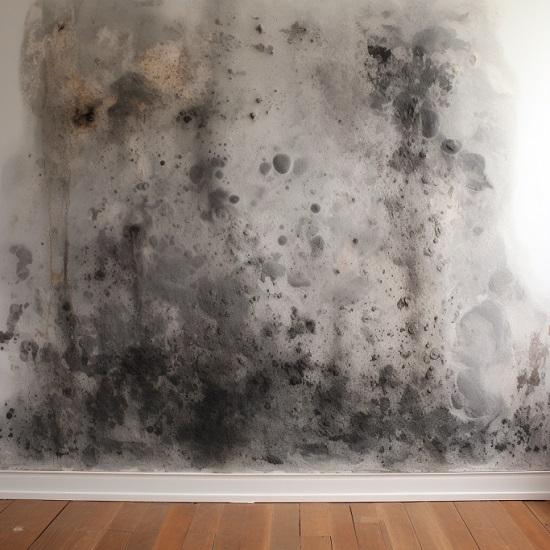Your Ultimate Overview to Article Mold And Mildew Remediation Strategies
Browsing the world of post-mold remediation techniques is a careful procedure that demands attention to information and a comprehensive understanding of the ins and outs included. In the aftermath of mold and mildew problem, knowing how to effectively get rid of the mold and mildew and stop its reoccurrence is extremely important for preserving a healthy interior atmosphere. From picking the ideal cleansing and disinfecting methods to carrying out methods for long-term mold avoidance, each step in the removal trip plays a vital function in guaranteeing an effective result. As we get started on this expedition of post-mold remediation strategies, we will discover the essential approaches and finest practices that can assist you restore your room to its pre-mold condition and secure it against future mold and mildew dangers.
Comprehending Post-Mold Removal Process
After completing the mold remediation process, it is important to understand the post-mold remediation techniques that are necessary to guarantee a comprehensive and efficient clean-up. When the mold and mildew has actually been gotten rid of, the following step entails cleansing and decontaminating the influenced areas to avoid any regrowth of mold. This includes making use of specialized cleansing representatives to clean down surfaces and kill any kind of continuing to be mold and mildew spores. It is important to dry out the location completely to inhibit the development of mold and mildew in the future (Post Mold remediation cleaning). Appropriate air flow and dehumidification can help in this procedure.
Additionally, conducting a final assessment post-remediation is vital to guarantee that all mold has been successfully removed. If the examination reveals any kind of sticking around mold, extra remediation may be necessary.
Reliable Cleaning Up and Decontaminating Techniques

Avoiding Future Mold Growth

Relevance of Correct Air Flow
Proper air flow plays an essential role in avoiding dampness accumulation, a key variable in mold growth within interior atmospheres. Efficient ventilation systems aid eliminate excess humidity from the air, minimizing the chances of mold and mildew spores finding the moisture they require to germinate and spread out. Without ample ventilation, interior spaces can come to be a breeding place for mold, resulting in possible health threats and structural damage.
By making certain appropriate air blood circulation, ventilation systems can likewise aid in drying out wet areas faster after water damages or flooding occurrences, even more hindering mold growth. Post Mold Remediation. In areas like bathrooms, attic rooms, cooking areas, and cellars where moisture levels tend to be higher, installing and maintaining efficient air flow systems is vital in protecting against mold and mildew infestations

Tracking and Upkeep Tips
Provided the critical role that appropriate ventilation plays in preventing mold and mildew growth, it is important to establish effective surveillance and maintenance tips to make sure the continued capability of air flow systems. Routine inspections of air flow systems ought to be carried out to look for any kind of indications of clogs, leaks, or malfunctions that can hamper proper air flow. Monitoring moisture levels within the home is additionally vital, as high humidity can add to mold and mildew development. Setting up a hygrometer can help track humidity degrees and alert property owners to any spikes that might require interest. In addition, making sure that air filters are frequently cleansed or replaced is vital for keeping the resource effectiveness of the air flow system. Executing a timetable for regular maintenance jobs, such as duct cleansing and HVAC system assessments, can aid prevent problems prior to they rise. By staying conscientious and aggressive to the condition of ventilation systems, homeowner can successfully minimize the danger of mold and mildew regrowth and keep a healthy and balanced interior environment.
Final Thought
To conclude, post-mold remediation strategies are necessary for making certain a secure and clean environment. Recognizing the procedure, applying reliable cleaning and disinfecting approaches, protecting against future mold development, keeping appropriate ventilation, and regular monitoring are all crucial action in the removal process. By following these standards, you can effectively eliminate mold and mildew and avoid its return, functioning or promoting a healthy living area for all residents.
In the after-effects of mold problem, understanding how to successfully eliminate the mold and stop its reoccurrence is critical for keeping a healthy interior environment. As soon as the mold has actually been removed, the following action includes cleaning and sanitizing the affected areas to protect against any regrowth of mold - Post Remediation verification. After eliminating visible mold and mildew growth, it is crucial to clean up all surface areas black mold removal tips in the affected area to get rid of any kind of remaining mold spores. To better enhance mold prevention procedures, it is essential to deal with underlying problems that originally led to mold development.Provided the vital duty that proper ventilation plays in stopping mold and mildew development, it is crucial to develop effective monitoring and maintenance suggestions to make sure the ongoing capability of air flow systems